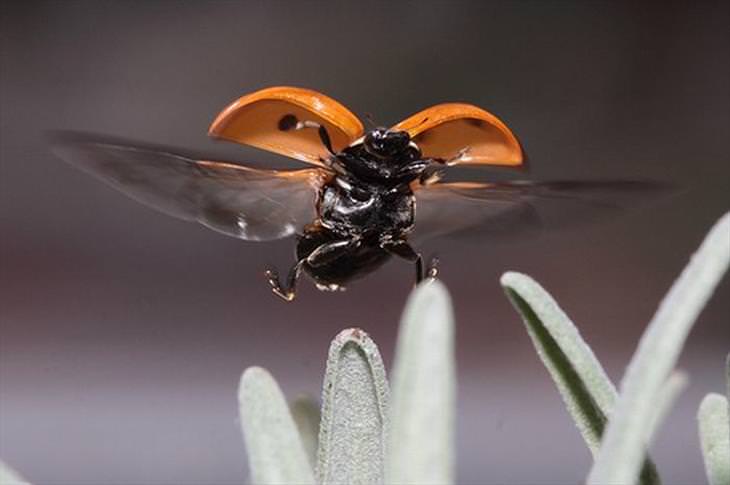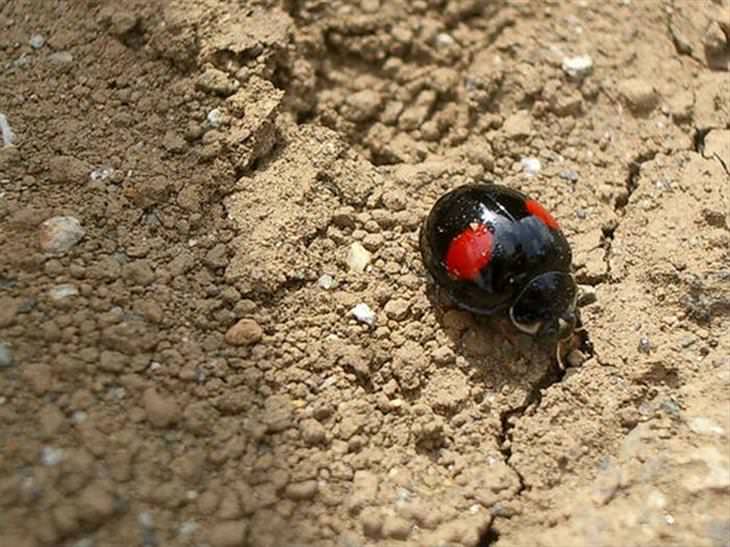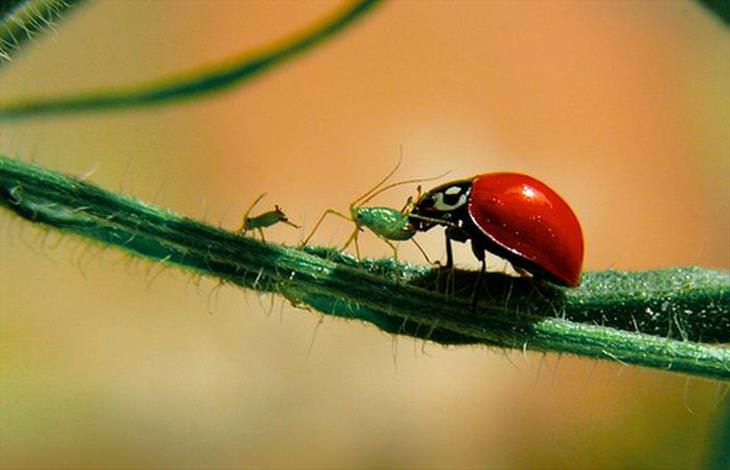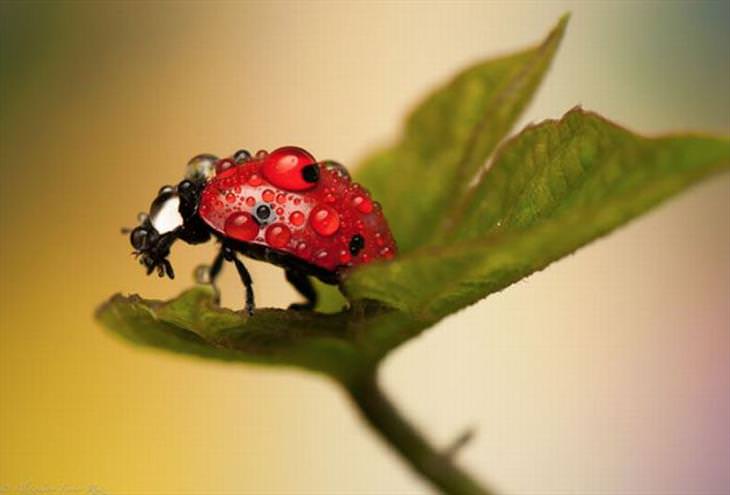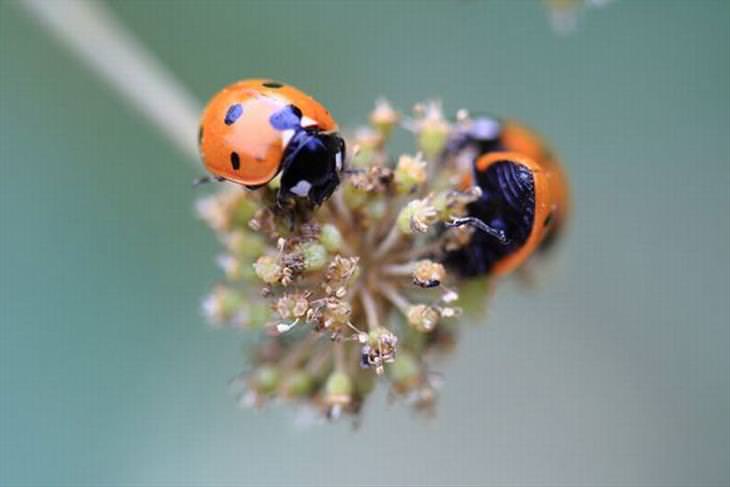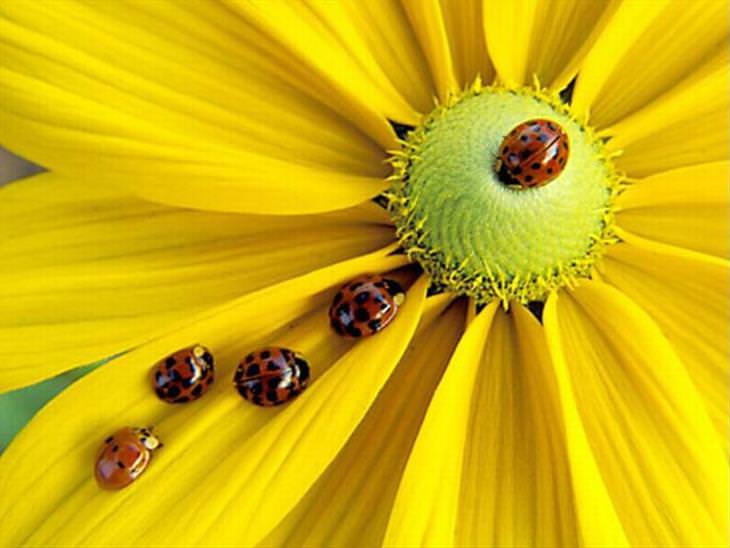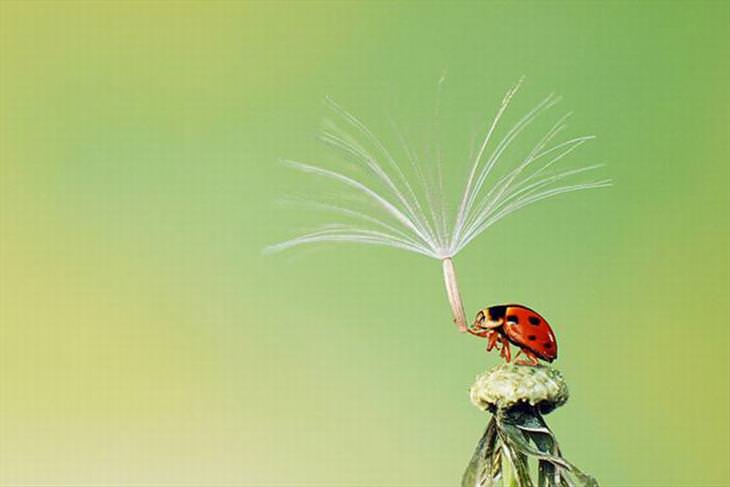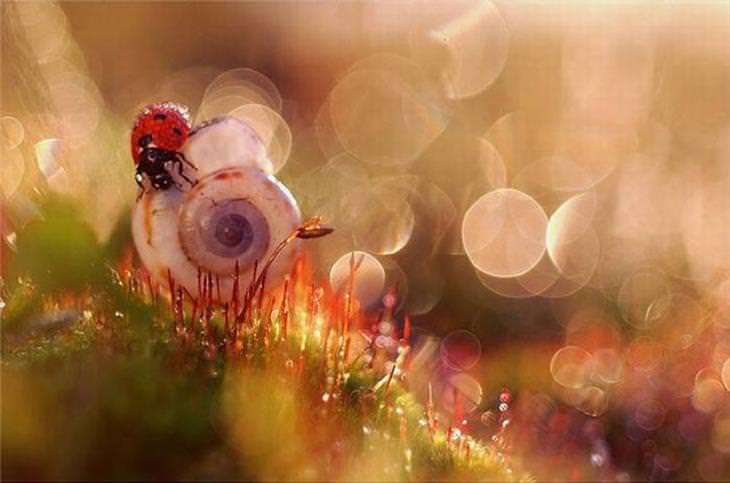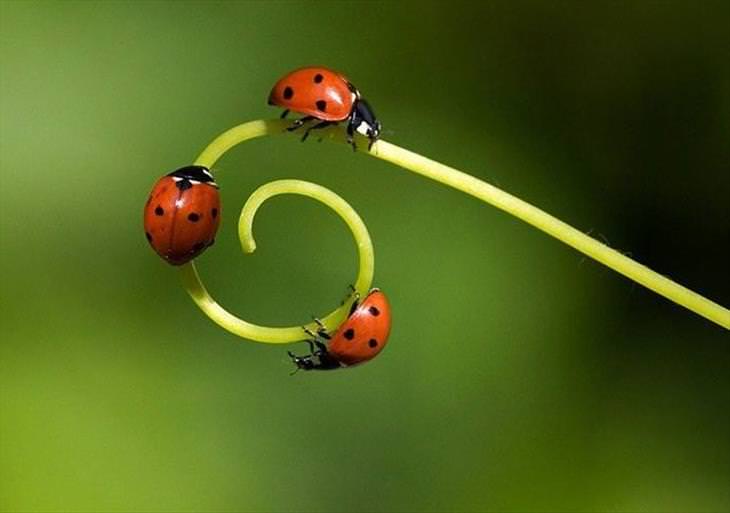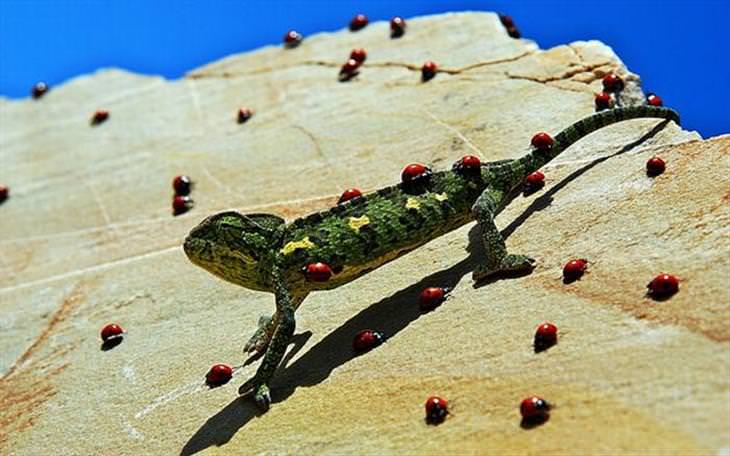Whether we call them ladybugs, ladybeetles, or even ladybirds, these pretty, winged insects are known and loved by everyone. With their familiar, delicate wings, covered with a varying array of patterns of red - or yellow or orange - and black spots, these tiny members of the Coccinellidae family of beetles are sized between a minuscule 0.03 and 0.7 inches. I always feel a childish wonder and thrill when one lands nearby, especially if I can coax her on to my hand.
So which is your favorite beetle?
There she goes again: a ladybug taking off
A ladybug has many morning dewties to perform
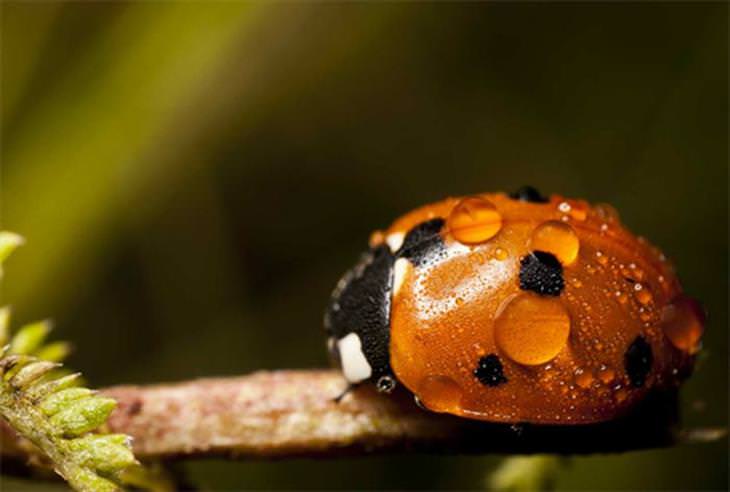
A Kidney-spot ladybird checking every nook and cranny
Aphid: 'Please don't eat me, dear ladybug!'
It is not just for their beauty that ladybugs are loved by the world. Since they feed off plant-eating insects, like aphids or green-fly, farmers especially enjoy seeing ladybugs on their farms. They can eat up to 5000 aphids in one year, and luckily the average ladybug has a lifespan of 2 to 3 years. Although insects are their main source of energy they often supplement their diets with fruits and vegetables. Likewise, some specialized ladybugs are known to favor fungi and mildew. Surprisingly they can even get sustenance from human moisture, so If you are a bit sweaty you may even invite one to clean you up too.
A pretty lady out of the bath, caught without a towel
Carrying water uphill is no job for a lady
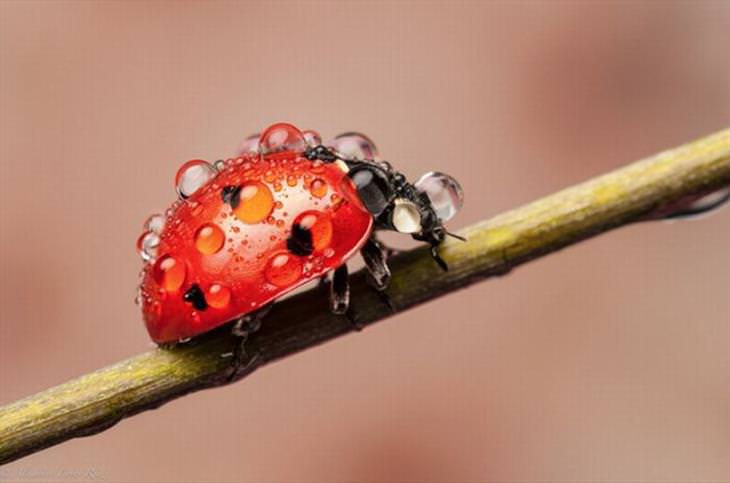
When times are hard ladybugs still shine
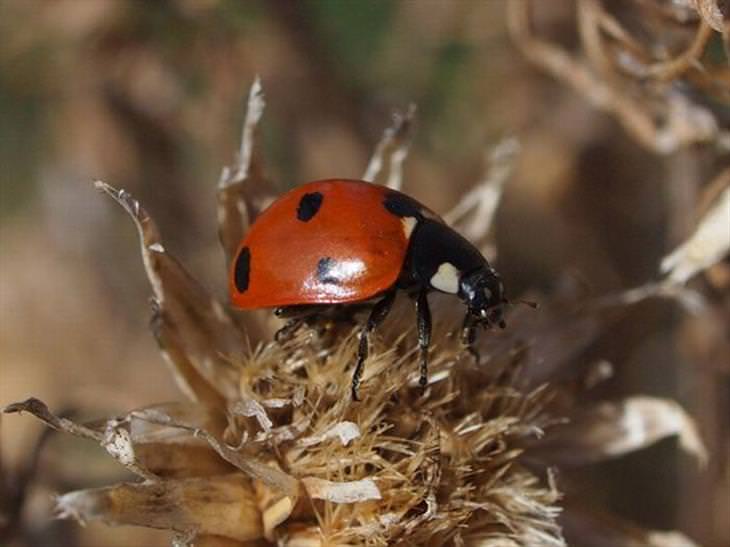
There are around 5000 species of ladybugs. And one in particular, the harlequin, is today taking the world by the storm. After being introduced into America from Asia in 1916, it quickly became the most common species of ladybugs. It was brought in to exterminate the scale mite, which was feeding on valuable crops. 100 years on and the scale mite is gone, but the harlequins have gone from strength to strength. Recently, in 2004, the harlequin made the journey to Britain, and it is already the most numerous ladybug in the country, with a population in the billions.
Two ladybirds working well together
Pretty ladies deserve a flower
Ladybugs love to strut their stuff on the catwalk
The Latin name, 'coccineus', meaning scarlet, is also related to its usual striking red color. Its color may even suggest why the bug is considered a lady. The 'lady' comes from 'Our lady' Mary, mother of Jesus, who was frequently painted wearing a red cloak. In German, the ladybug is known as 'Mary's beetle' (Marienkafer), and in French, 'God's animal' (la bete a bon Dieu). Across Europe, ladybugs are considered favorable benefactors of mankind, and even omens of good fortune. Hence, it is widely known that you should never kill a ladybird if you wish to avoid bad luck.
"After my aphid, I would like raspberry for dessert"
A ladybug showing real leadership
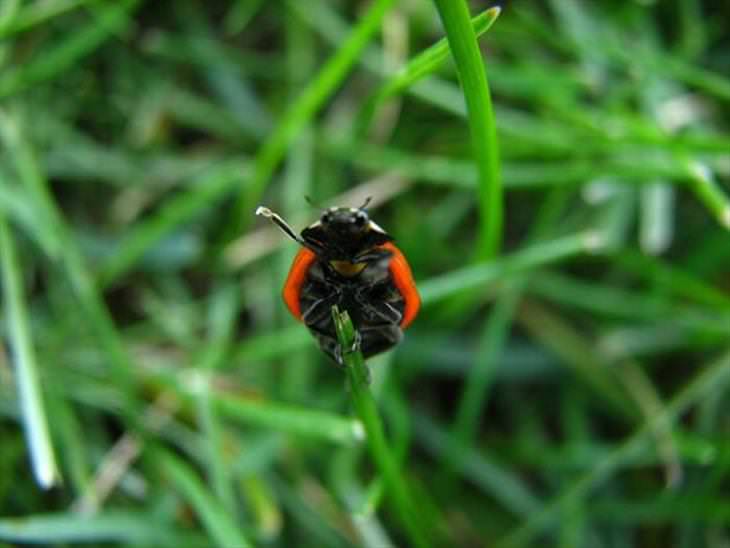
-
Ladybugs can inspire all of us
The name 'ladybug' is used mainly by Americans, while the British prefer 'ladybirds'. However, in earlier times many other names were commonplace. Because she would first appear in June, around the feast of important Christian missionary, St. Barnabas, the bug was often named 'Bishop-Barnaby', 'Barnabee', the 'Bisho-that-burneth' and, my favorite, 'bishy bishy barnaby'.
A ladybug is never to shy to investigate mysteries
You may come as close as you like, she won't bite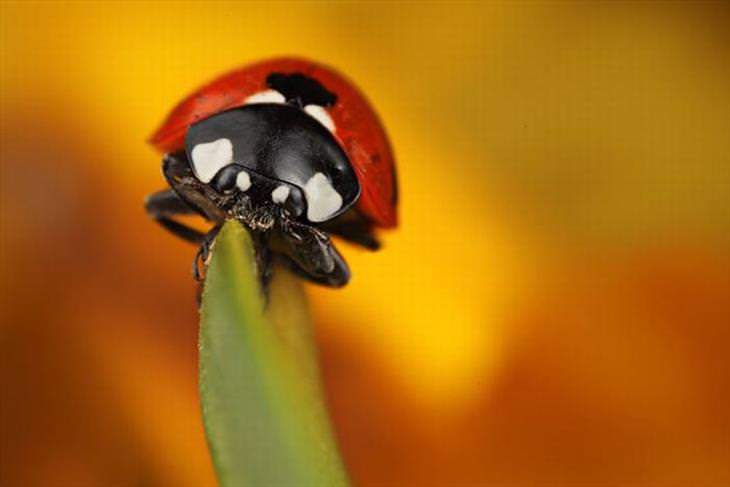
These three ladybirds are so elegant
Do you remember the old nursery rhyme 'Ladybird, ladybird'? One traditional version, published in 1744, goes like this:
- Ladybird, ladybird, fly away home,
- Your house is on fire and your children are gone,
- All except one,
- And her name is Ann,
- And she hid under the baking pan.
-
- Another version of the rhyme even appears in Mark Twain's famous Tom Sawyer, where Tom addresses a pretty ladybug: 'Lady-bug, lady-bug, fly away home, Your house is on fire, your children's alone.'
A ladybug landing on a flower - in mid air!
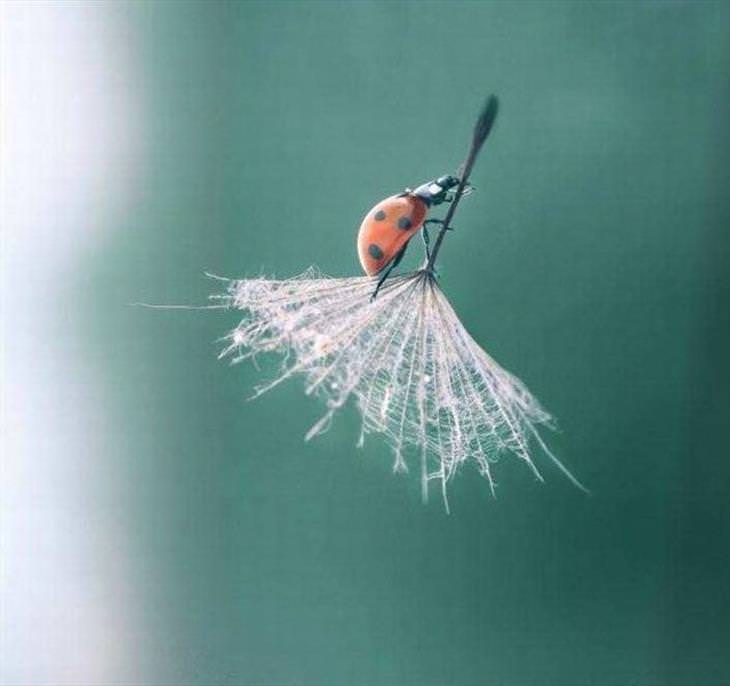
The Beauty of flight in one image
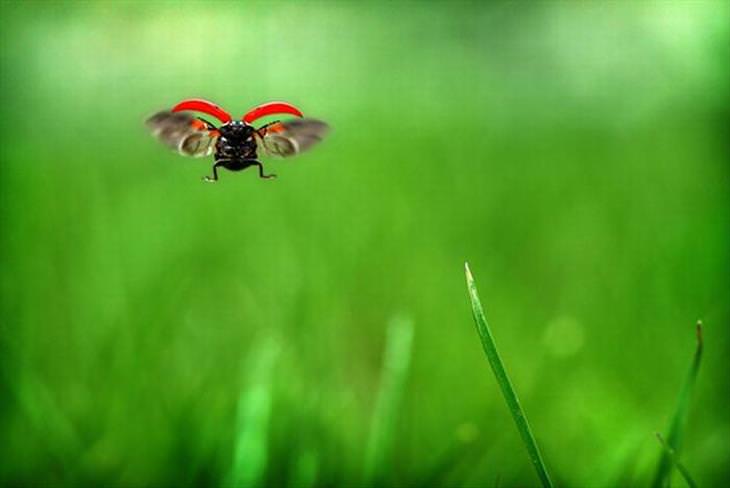
Even this lizard enjoys their company

